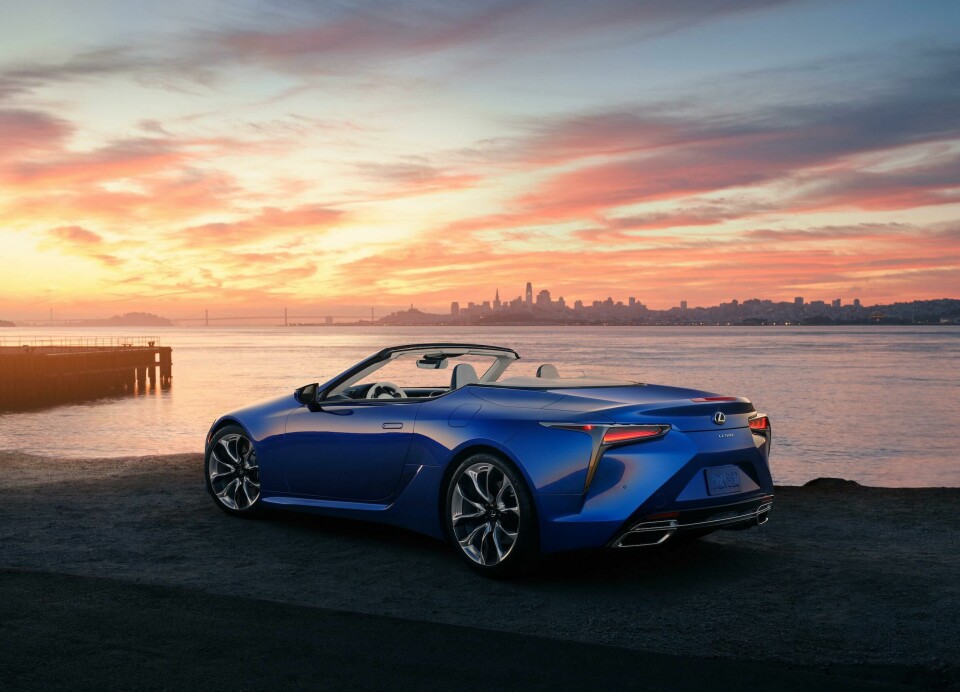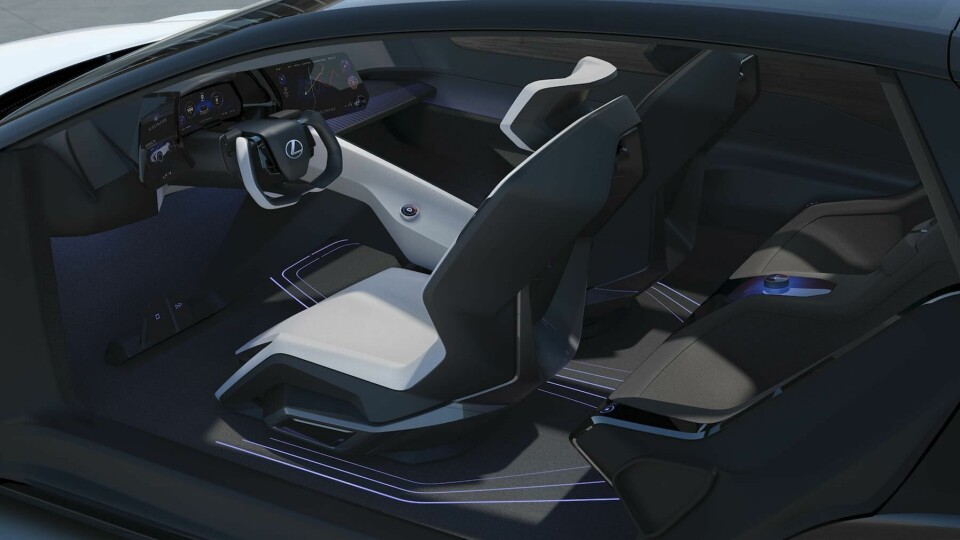
Design review: Lexus LC Convertible
With small exceptions, the drop-top flagship LC Convertible from Lexus holds its own more than than two years after the show car debuted
“The LC is kind of a miracle car,” Lexus chief designer Tadao Mori tells Car Design News, on a call from Toyota Motor Europe near Brussels. “Normally on other projects we just fight, but with the LC everybody wanted to realise a beautiful car.”

And beautiful it is. Although it’s been more than two years since Lexus unveiled a concept version of the LC convertible at the North American International Auto Show in Detroit, and more than four years since we drove the coupe at the media launch, the brand’s RWD flagship still looks contemporary with elegant proportions, wide hips, and broad spindle grille.
While the latter seemed extreme upon its debut, it appears almost subtle these days in comparison to some of the gaping maws of today’s BMWs and Korean cars. Even in jaded Los Angeles, our LC convertible loaner gets look after admiring look, with its metallic ruby “Infrared” paint glistening in the California sun.
Compared with the coupe, the convertible has a slightly different silhouette. To accommodate the powered soft top, designers and engineers made the roof shorter and the boot longer. “On some vehicles, once you close the top, it doesn’t look so beautiful, but for us both styles should be perfect,” Mori says. “The coupe has a very fast rear cabin area, but with the convertible, we wanted to make soft top as compact as possible. From the side view you can see a big difference, which gives a little different character.” That top, a marvel of moving bits and pieces, can open or close in about 15 seconds and is a delight for anyone – especially those mechanically minded – to watch in the rearview mirror.
The deck lid on the production car also sports more of a spoiler shape compared with the concept, and sits quite a bit lower. “With the timing for show car, we had some kind of limitation for the trunk area, so that’s why the trunk lid is slightly higher than production,” Mori explains. “We gave a very challenging task to the engineers and I asked them, ‘Please make this area 20 mil down, 30 mil down …’ then I showed our sketches and mockups and engineers said, ‘OK, we should do that.’ Normally it’s the opposite, a concept car is sleeker, but this time we made it even better-looking than the show car.” It’s not the first challenge Mori and his team gave the engineering department. To accommodate the LC’s large wheels, engineers had to greatly reduce the amount of sheet metal between the wheel arch and the hood and design an entirely new front suspension.
The interior of the LC convertible is nearly identical to the coupe, with almost every surface covered in leather or Alcantara, even in the (hopelessly diminutive) back seat. Mori points out details such as perforations that gradually change their patterns and the controller switch for the soft top that lies hidden beneath a folding cover in the centre console. “I like that type of thing,” Mori says. “It’s very James Bond.”
The LC’s glaring fault, however, lies with its user interface. Instead of a rotary knob or touch screen, a touchpad on the centre console controls the 10.3-inch display screen. Dragging one’s finger around and clicking on the desired menu options require such minute and accurate movements that it’s nearly impossible to use while driving. Mori and team are quite aware of the criticism.
“We listen to customers’ voices, good and bad,” he says. “The LF-LC show car (which served as design inspiration) was in 2012 and back then Apple and iPhone were getting more popular, but we did not expect that kind of future after seven or eight years, with people getting used to direct touch of surfaces. But we had a hypothesis that when driving it’s dangerous to reach the monitor while keeping the driving posture, so we wanted to find the best way to use it. But touch screen is more popular now. We learned a lot.”

As expected, Mori won’t confirm future changes, but the refreshed Lexus ES unveiled last month features a new touchscreen, giving hope for subsequent models (although the trackpad is still there). And just as the LC was inspired by the LF-LC show car, we hope the next generation of Lexus vehicles will incorporate elements of the digital interface and gesture controls on the LF-30 concept and LF-Z Electrified Concept.
While that car hints at an electrified future for Lexus, the LC convertible, meanwhile, makes a statement with a naturally aspirated, 5.0-litre V8 engine that makes 471bhp (a hybrid option is available only on the coupe). Say what you will about big motors becoming obsolete, but it’s somehow refreshing to rebelliously mash one’s foot into a posh, petrol-burning machine that boasts smooth, effortless acceleration – and a growling exhaust note. Mori says that, for now, there’s still room for “special occasion” cars like the LC. “Three years ago I was impressed at the Goodwood Festival of Speed; people were very excited about motors and gas and the smell, but at the same time VW shows a electric racing car and the people are so excited to watch that car even with no sound, but it looks great. So people can still love [petrol] cars but at the same time they like the future.”














